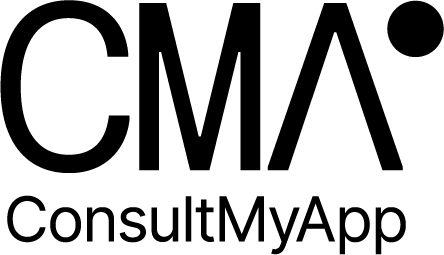Why You Need a User Acquisition Audit for Your Mobile App in 2023
User acquisition for mobile apps is a challenging endeavor where mistakes can carry a heavy cost. Early-stage startups commonly budget $50,000-$100,000 monthly for user acquisition efforts. As apps mature, monthly spending sometimes reaches over $1 million.
According to research from AppsFlyer, global spending on app-install advertising is projected to hit $94.9 billion by 2025—a 20% increase from 2023. With millions of apps battling it out for users in major app stores, an inefficient strategy can waste substantial funds.
When key metrics like CVR, and ROAS (return on ad spend) start to decline while CAC keeps growing, it may indicate your user acquisition approach needs optimization. A user acquisition audit evaluates the effectiveness of current strategies and identifies opportunities to boost performance.
As experts who drive user acquisition for mobile apps globally , the ConsultMyApp team is here to share what a good user acquisition audit should look like and the main signs you need one.
Stagnant or declining mobile app performance indicators
To understand how your app is actually performing and make data-driven decisions, you should keep an eye on your most important metrics on the app side, like the number of app users, conversion rate (CR), click-through rate (CTR), installs, conversion to in-app events, subscriptions, and user lifetime value (LTV).
When these indicators start to plateau or decline, it’s a red flag that should trigger an audit. You might be acquiring the wrong audience, which doesn’t match your customer persona and thus doesn’t convert properly.
Inefficient allocation of budget for paid user acquisition and mobile advertising
A recent study by AppsFlyer revealed that the inefficiency of mobile app marketing has led to a 30% waste in marketing budgets. Rising acquisition costs coupled with stagnant or declining ROAS/ROI metrics are red flags signaling inefficient spending.
Keep a close watch on key metrics like impressions, conversion rate (CR), click-through rate (CTR), customer acquisition cost (CAC), cost per install (CPI), cost per thousand impressions (CPM), install rate (IR), and impressions per million (IPM).
Having current benchmark data on hand can help determine if your acquisition strategy needs reevaluation. According to SimplicityDX, customer acquisition costs (CAC) have risen by 60% between 2017 and 2022 to an average of $29 per user.
Let’s look at how the average CAC varies depending on the region, app store, and app category:
Region—Based on the Business of Apps data, the average mobile app CPI ranges from $0.34 in Latin America to $0.93 in APAC, $1.03 in EMEA, and up to $5.28 in North America.
App store—The CPI for iOS apps is traditionally higher than Android apps’ CPI, reaching $3.6 for iOS and $1.22 for Android.
App category—CPI also varies dramatically between different types of apps. For example, the average CPI for gaming is reported to reach $1 in 2022/23. However, within the gaming category, there are significant differences between subcategories. Simulation games have the lowest average CPI at $0.59 per install (with iOS at $2.23 and Android at $0.63), while casual gaming apps have an average CPI of $0.98.
Major updates to product and app marketing
Whenever a significant update to the app is rolled out, it’s essential to ensure that the acquisition strategy is aligned with the new features and target audience. Such updates can introduce new features, functionalities, or target demographics that necessitate changes in how you acquire users.
According to Localytics, 21% of users abandon an app after just one session, frequently because it fails to align with their needs. For instance, if a mobile banking app launches a new budgeting feature, its target audience may expand to include users with a particular interest in personal finance management.
Similarly, consider a fitness app that rolls out an update centered on nutrition and meal planning. Previously, the app's user acquisition strategy was concentrated on reaching exercise enthusiasts, advertising heavily in workout-related channels. However, after expanding its capabilities to nutrition, failing to recalibrate acquisition to reach diet-focused users could render that marketing budget ineffective.
In fact, AppsFlyer found that aligning acquisition targeting with new product capabilities can improve retention by up to 30%. In the fitness app example, broadening its focus to target health-conscious individuals interested in nutrition could have driven stronger retention of the new users onboarded. Apps with a narrow target audience that expand features without realigning acquisition stand to lose relevancy and increase spending.
Changes in the competitive landscape on the app store and user acquisition channels
The fast-moving mobile app market means the competitive landscape can shift rapidly. The entry of a notable competitor in your app category should trigger a reevaluation of targeting and creatives.
Let's suppose a new fitness app launches with advanced features like 1-on-1 virtual training and form-correction technology. An established app without these capabilities would need to expand acquisition beyond general fitness buffs. Targeting serious bodybuilders and powerlifters who value coaching could help minimize the churn of their power-user base.
Additionally, emerging consumer trends can rapidly change demand. When COVID-19 hit, downloads of virtual meeting apps like Zoom skyrocketed; meeting participants increased by 2900%. Apps that digitized recreational activities also saw massive growth.
Regulatory and compliance risks
Changes in privacy regulations and compliance norms can profoundly impact user acquisition strategies for mobile apps, which forces app marketers to audit their user acquisition campaigns and adjust their tactics accordingly. According to a survey by Mobile Marketer, 68% of advertisers expected to be affected by iOS 14’s ATT changes when they were just released.
iOS 14’s ATT requires app developers to ask users for permission to track them across apps and websites owned by other companies. This means that app marketers may lose access to the Identifier for Advertisers (IDFA), which is a unique code assigned to each iOS device that allows advertisers to target and measure users. Without IDFA, app marketers will face more difficult challenges in optimizing their campaigns, attributing conversions, and retargeting users.
To cope with these challenges, app marketers need to adopt alternative solutions, such as Apple’s SKAdNetwork (SKAN), which provides aggregated and anonymized attribution data for app-install campaigns. However, SKAN has some limitations, such as a reduced number of conversion events, delayed reporting, and lack of user-level data. Therefore, app marketers need to test and evaluate different strategies and platforms to find the best fit for their goals and budgets.
One case study that illustrates the impact of iOS 14’s ATT on user acquisition is from Liftoff, a mobile app marketing platform. Liftoff analyzed the data from 1,759 iOS apps before and after the implementation of ATT in April 2021. The study found that:
The adoption rate of iOS 14.5 was 12.9% within two weeks of the launch.
The opt-in rate for sharing IDFA was 16.8% for iOS 14.5 app installs.
The ad spend on iOS decreased by 3.59%, while the ad spend on Android increased by 8.29%.
The CPMs on iOS 14.5 declined by 2.4%, indicating lower demand and competition for iOS inventory.
How often should you audit your mobile app user acquisition strategy
While there's no set rule, audits are recommended at major milestones or performance shifts—typically on an annual or biannual basis. The duration depends on the scale of your app, but it usually takes 2-6 weeks to thoroughly evaluate strategies and implement changes.
According to a survey from CleverTap, 82% of marketers audit acquisition strategies at least once a year. For rapidly growing apps, 45% perform quarterly audits to adapt to their evolving user base. Games may review acquisition during major feature releases or new season launches. Apps should also audit strategies if they experience a dramatic drop in KPIs, like a 50% increase in CPI or a 40% decline in conversion.
What a good mobile UA audit
app needs
A comprehensive audit dives deep across key performance indicators, marketing levers, and the user journey. It usually involves several steps, such as analyzing performance data, running experiments, gathering competitive intel, and realigning targeting.
On the metrics side, the audit should synthesize the following data points:
CPA, CPI, CPT—Are costs per action/install efficient or ballooning over time?
Install volumes—How have total acquisition numbers trended?
IPM—Is income per new user as projected?
ROAS—Does return on ad spend indicate healthy scaling or diminishing returns?
It’s also important to know that benchmarking against competitors and category norms spots outliers. For example, a dating app with a CPI double their competitors signals inefficient spending.
Auditing channel-specific metrics gives clarity on where users and conversions originate and exposes high-performing platforms as well as problematic areas needing realignment. For example, TikTok delivered 39% of users but only 15% of conversions, while Apple Search Ads accounted for 18% of users and 47% of conversions for one gaming app, according to AppsFlyer. This imbalance highlights optimization needs.
Auditing target audience segmentation reveals the best-fitting user profiles to refine targeting. Evaluating creatives indicates messaging that resonates versus flaws in ad copy or format. A Parallax study found that 60% of gaming apps saw video ads outperform static creative ads.
Benchmarking against competitors and category norms spots outliers. For example, a dating app with a CPI that’s 2x higher than its competitors signals inefficient spend. The audit synthesizes insights across these areas into actionable recommendations tailored to business objectives. Whether lowering CPIs, improving conversions, or maximizing retention, an audit guides realignment for optimal user acquisition success.
With rigorous analysis of metrics, channels, audiences, creatives, and the user journey, audits provide a 360-degree view of performance to inform strategy. Data reveals what's working, what's not, and where improvements will make the biggest impact.
If you want a comprehensive user acquisition audit for your mobile app, contact us at Consult My App or learn how we can help improve your paid acquisition.
You might get some value out of these articles. Try one:




